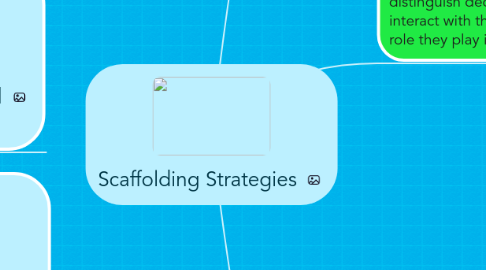Scaffolding Strategies
por Susan Girgis


1. Susan Girgis - Grade 5 Science
2. NGSS (Science) Standard:5-LS2-1. Develop a model to describe the movement of matter among plants, animals, decomposers, and the environment.
3. Big Idea: Matter moves among plants, animals, decomposers, and the environment.
4. Big Idea: Living and non-living components interact for energy, which they get through matter
5. Big Idea: Matter that moves through the ecosystem includes oxygen, carbon, and nitrogen
6. SWBAT explain what characteristics that distinguish plants, how they interact with their environment, and the role they play in an ecosystem
6.1. Prior Knowledge/Readiness: Since all students have knowledge of plants, building on that to discuss topics like photosynthesis (how plants use the sun to produce energy), and how animals benefit from plants, will be very accessible to most/all students. ELL students may struggle with vocabulary.
6.2. Scaffold Strategy: Tap into prior knowledge - given the familiarity that all students have that plants need sun, and animals (including humans) eat plants, referring to what they already know will help to build concepts of more complex/less visible cycles like the oxygen cycle
7. SWBAT explain what characteristics that distinguish decomposers, how they interact with their environment, and the role they play in an ecosystem
7.1. Prior Knowledge/Readiness: Most students have knowlege of worms, fungi (mold), and bacteria, so building on this knowledge through videos and reading right level text will enable students to understand decomposition and decomposer role in the ecosystem. All students would benefit from thinking about real life examples of decomposers and their role in movement of matter.
7.1.1. Materials
7.1.2. Personel
7.1.3. Services
7.1.4. Duration
7.2. Scaffold Srategy: Use visual aids - Use pictures and gestures to relay the cycles and characteristics of plants, to help support ELL students with vocabulary
7.3. Scaffold Strategy: Show them! bring in worms, moldy fruit, and pictures of bacteria, while explaining how they break down and pass on nutrients/matter
7.4. Scaffold Strategy: Pause, ask questions, pause, review - since students have less first hand knowledge with decomposers (vs. plants and animals), ask thoughtful questions that will get them thinking or comping up with hypothesis, for example 'Why do we need worms in the soil', or 'is all bacteria bad?'
8. SWBAT explain what characteristics that distinguish animals, how they interact with their environment, and the role they play in an ecosystem
8.1. Prior Knowledge/Readiness: All students have knowledge of how we humans interact with other animals, plants and decomposers, but ELL students may not have the vocabulary needed to discuss how we contribute to the various matter cycles, and ADD students may find it difficult to track many parts of the chain or cycle at once
8.1.1. Dependencies
8.1.2. Milestones
8.2. Scaffold Strategy: Think-Pair-Share - use this when learning food chains, and how they support movement of matter in order to scaffold students that may not be able to articulate their knowledge of a food chain either because they're ELL or ADD and not always able to think through multiple steps at the same time
8.3. Scaffold Strategy: Prompted Outline - Provide an outline that prompts for animal characteristics, type of feeders, role in ecosystem, etc. in order to support ADD and ELL students. This is generally helpful to all students to organize and connect their new knowledge/learning
8.3.1. KPI's
